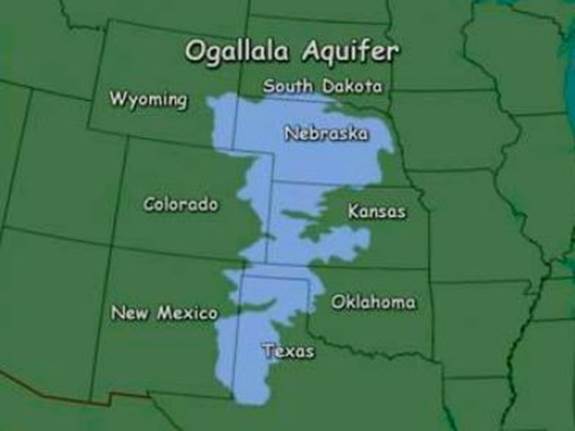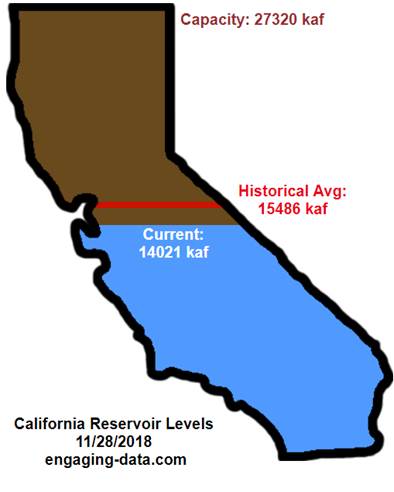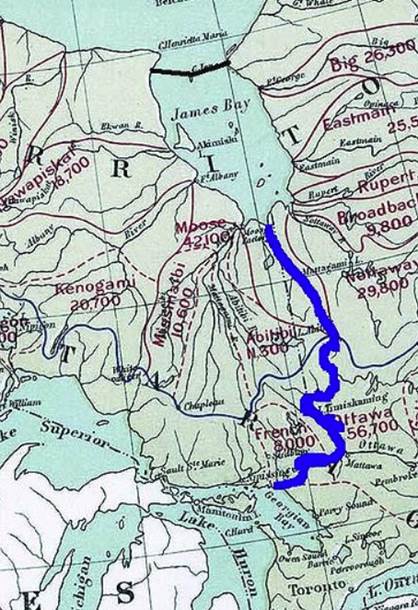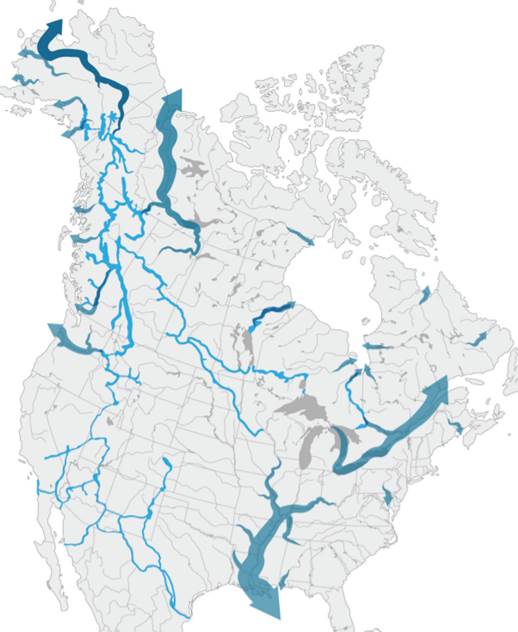United States Facing Climate Change Severe Water Stress
Commodities / Climate Change Dec 10, 2018 - 03:11 PM GMTBy: Richard_Mills
 Whisky is for Drinking; Water is for Fighting Over
Whisky is for Drinking; Water is for Fighting Over
The problem of severe water stress in the United States - and elsewhere - is serious and getting worse. Water stress is what happens when the demand for water exceeds the amount available, or when poor quality restricts its use. It most commonly occurs in areas where available water supplies have been over-exploited, often due to agriculture or urban development.
Depending on diet and lifestyle, a person needs between 2,000 and 5,000 litres of water a day to produce their food and meet their drinking and sanitation requirements
Most people are unaware that the amount of fresh water globally is extremely limited. Ninety-eight percent of the world’s water is in the oceans – which makes it unfit for drinking or irrigation because of salt. Just 2% of the world’s water is fresh, but the vast majority of our fresh water, 1.6%, is in a frozen state, locked up in the polar ice caps and glaciers. Our available fresh water (.396% of total supply) is found underground in aquifers and wells (0.36%) and the rest of our readily available fresh water, 0.036%, is in lakes and rivers.
A worldwide problem
The World Water Development Report warns over 5 billion people could see water shortages by 2050, leading to conflicts over water unless actions are taken to reduce stress on rivers, lakes, wetlands and reservoirs, states The Guardian.
“Whisky is for drinking; water is for fighting over.”
- Mark Twain
But we don’t have to wait until 2050 to see this is already happening. In 2008 Barcelona, Spain had to ship water in on tankers. People in Melbourne lived under the constant threat of water cuts during a prolonged drought from 1998 to 2010. In 2015 Sao Paulo, Brazil suffered its worst water crisis in a century, with the amount of rainfall cut in half. In October 2014 its main reservoir, Cantareira, was under 7% full - barely enough to last a month.
How Cape Town Defeated Day Zero—for Now
Global Health NOW
This year it was Cape Town, South Africa’s turn. A combination of population growth, over-development and climate change conspired to bring about the worst drought on record, in the country’s most popular tourist city. Officials warned that unless drastic conservation measures were taken, by summer the city’s 4 million residents would be forced to cue up for drinking water surrounded by armed guards. “Day Zero”, when taps would be turned off due to perilously low reservoir levels, was originally predicted for July 2018 but has now been pushed back to 2019.
Cape Town is not alone. In February 2018, The BBC compiled a list of 11 cities with recurring water supply problems. They are: Sao Paulo, Bangalore, Beijing, Cairo, Jakarta, Moscow, Istanbul, Mexico City, London, Miami and Tokyo.
An estimated 2/3 of the world’s population lives in drought conditions for at least one month every year.
The problem of water stress is closely connected to climate change. A report from the UN Intergovernmental Panel on Climate Change notes developing countries like India are likely to be worst hit by climate change due to the frequency of droughts, which will lead to water shortages and problems with food production.
For more read our The day they turned off the taps (Part 4 of a five-part series on climate change)
The Stockholm International Water Institute has kindly provided some statistics we should all be aware of:
- The 10 largest water users (in volume) are India, China, the United States, Pakistan, Japan, Thailand, Indonesia, Bangladesh, Mexico and the Russian Federation.
- With rapid population growth, water withdrawals have tripled over the last 50 years. According to the United Nations Department of Economic and Social Affairs (UNDESA), the world population is predicted to grow from 6.9 billion in 2010 to 8.3 billion in 2030 and to 9.1 billion in 2050. At the same time, urban populations are projected to increase by 2.9 billion, to 6.3 billion by 2050. An estimated 90% of the people expected to be added to the population, by 2050, will be in developing countries, many in regions already in water stress where the current population does not have sustainable access to safe drinking water and adequate sanitation.
- Water withdrawals are predicted to increase by 50% by 2025 in developing countries, and by 18% in developed countries.
- Water for irrigation and food production constitutes one of the greatest pressures on fresh water resources. Agriculture accounts for around 70% of global freshwater withdrawals, even up to 90% in some fast-growing economies.
- Feeding everyone in 2050 could require 50% more water than is needed now.
- The dietary shift from predominantly starch-based food to meat and dairy, which require more water, is the greatest to impact on water consumption over the past 30 years. Producing one kg of rice requires approximately 3,500 liters of water while one kg of beef requires 15,000 liters. Producing that one kg of meat requires as much water as an average domestic household uses over 10 months (50l/person/day).
- Estimates indicate that there will not be enough water available on current croplands to produce food for the expected population in 2050 if we follow current trends and changes towards diets common in Western nations (3,000 kcal produced per capita, including 20% of calories produced coming from animal proteins).
The US is running out of water
Zeroing in on North America, the United States is running out of fresh water resources. According to the EPA, four out of five state water managers expect water shortages in some part of their states over the next decade. (2014 report)
A major concern is over water levels in the Ogallala Aquifer under the US Great Plains. The Ogallala is the world's largest known aquifer having an approximate area of 450,600 square kilometers and stretches from southern South Dakota through parts of Nebraska, Wyoming, Colorado, Kansas, Oklahoma, New Mexico and northern Texas.
The Ogallala Aquifer was formed roughly 10 million years ago when water flowed onto the plains from retreating glaciers and streams of the Rocky Mountains.
The main culprit is agriculture - farmers have been drawing water from the aquifer faster than it can be replaced, and now it’s not being recharged at all.

From the late 19th century until 2005 the US Geological Survey estimates irrigation pulled 253 million acre-feet from the aquifer - about 9% of its total volume. From 2011 to 2017 it reportedly shrank twice as fast as it had over the previous 60 years. In three leading grain-producing states - Texas, Oklahoma, and Kansas - the underground water table has dropped by more than 30 meters.
Over-use is exacerbated by extended droughts caused by global warming. Precipitation is shifting from the mid-latitudes to the low and high latitudes - wet areas are becoming wetter and dry areas drier. Less rainfall in the mid-latitudes means less new water to refill the aquifers that are being depleted the fastest.
This past summer, large swaths of the southern plains experienced drought ranging from “severe” to “exceptional” as seen by this map from Drought Monitor.

A recent study states that droughts are creating a feedback loop whereby the lack of soil moisture raises temperatures, and as the air heats up, it further desiccates the soil. If the aquifer is depleted, it could take 6,000 years to recharge, according to Scientific American. The worst-hit state is Kansas. Farming there is likely to reach a peak around 2040 due to water depletion, and decline after that.
California’s Central Valley is another part of the United States under serious water stress. As home to two-thirds of the nation’s fruits and nuts, California is heavily dependent on agriculture, deriving more revenue from farming than any other state. However, farming has also put severe pressure on the water supply, especially since the state is in a prolonged drought. Eighty percent of California’s water is used for agriculture. That was fine before 2000, but times have changed:
“Once upon a time, much of the state of California was a barren desert. And now, thanks to the worst drought in modern American history, much of the state is turning back into one. Scientists tell us that the 20th century was the wettest century that the state of California had seen in 1000 years. But now weather patterns are reverting back to historical norms, and California is rapidly running out of water.”
- Michael Synder, The Economic Collapse
Over-use of underground water supplies in California’s Central Valley has resulted in the loss of almost 50% of the storage capacity in all of California’s reservoirs.

A Stanford University report says that nearly 60% of the state’s water needs are now met by groundwater. That’s up from 40% in years when normal amounts of rain and snowfall.
In many areas, wells that used to draw water from 500 feet, are now being drilled to 1,000 feet and more, costing upwards of $300,000 for one well.
The San Joaquin Valley is reportedly sinking - driven by the over-exploitation of groundwater. In some areas the water table has dropped nearly 10 meters.
In the Midwest, the huge sandstone aquifer underlying the Illinois-Wisconsin border, which supplies Chicago and Milwaukee with water, is currently overtaxed and may be depleted in the near future. The 2015 Illinois State Water Survey reported the state’s sandstone aquifers are not being used sustainably, that high-capacity wells could be unusable in 15 years, and that many more wells could be dry by 2050. Just over three-quarters of the population of northeastern Illinois - including northern Chicago - rely on groundwater.
Streams, rivers and lakes are almost always closely connected with an aquifer. The depletion of aquifers doesn’t allow these surface waters to be recharged; lower water levels in aquifers are reflected in reduced amounts of water flowing at the surface.
The US uses so much water from their river systems that in some, nothing reaches the river’s destination. No water reaches the mouth of the Colorado River - low levels could force water shortages in Arizona, Nevada and Mexico by 2020.
The largest US man-made reservoir, Lake Mead, is only about 38% full. The Colorado River Basin which feeds Lake Mead and Lake Powell (48% full) has been drying out over the past two decades. Demands from farms and cities, compounded by growing populations, drought and climate change, are straining the Colorado River and its reservoirs, notes The Denver Post.
“I want people to know that what’s going on at Lake Mead is very, very closely tied to what’s going on Lake Powell,” Doug Kenney said, the group’s chair and a professor at the University of Colorado. “We’re draining Lake Powell to prop it up.”
The Ococee River in the southeastern United States has a large stretch of the river dry on certain days, Nebraska's Platte River is drying up and so is the not-so-mighty-anymore Mississippi.
Clean Technica reports the next three large US cities likely to face a Cape Town-like water crisis are Los Angeles, Salt Lake City and Miami.
Canadian water diversion
Canada has been blessed with numerous lakes and rivers – we have 7% of the world’s renewable supply of fresh water.
This has our friends to the south eyeing our water supply with envy. The idea of water leaving Canada for the United States has been a conception since at least 1909, when the Boundary Waters Treaty was signed. The treaty aims to resolve disputes that may arise over waters that straddle the US-Canadian border. It establishes the free use of boundary waters for commerce and navigation, and grants federal, provincial or state governments jurisdiction over the use, obstruction and diversion of those waters.
But the Boundary Waters Treaty doesn’t say anything about water exports, which is an emerging theme since the United States began to fall into drought early on this century. President George W. Bush first mused about it in 2001, when he suggested talking to Ottawa about a framework for international trade to alleviate fresh water shortages. The idea was quickly dismissed by the then-environment minister, David Anderson.
At the heart of Canada’s worry is that once water is opened up for trade within NAFTA (renamed the United States Mexico Canada Agreement, USMCA), it cannot be taken out of the agreement. In other words, Canada couldn’t turn off the taps if it didn’t like how much water the US was buying, or diverting, from Canada.
Public opinion is on the side of leaving Canadian water alone. A poll taken a few years ago found 61% of Canadians thought fresh water was our most important resource ie. not for sale. All provincial governments except New Brunswick have passed laws banning bulk water transfers.
However despite opposition to the idea, there have been numerous proposals about transferring large amounts of fresh water from Canada to the United States. These have largely remained under the radar - unreported by the mainstream press. Following are breakdowns on three of the most ambitious plans conceived to date:
- The Great Recycling and Northern Development (GRAND) Canal of North America (GCNA) was designed by Newfoundland engineer Thomas Kierans to alleviate North America’s fresh water shortage problems. As Kierans originally conceived it, the GRAND Canal plans called for the damming and rerouting of northern river systems in Quebec in order to bring fresh water down into the Great Lakes where the water could then be pumped into the American Midwest and the US Sun Belt.

Fresh water run-off from precipitation would be collected in James Bay by means of a series of outflow-only, sea level dikes, constructed across the northern end of James Bay. These dikes would capture the fresh water before it mixes with the salty water of Hudson Bay and create a new source of fresh water equivalent to 2.5 times the flow over Niagara Falls.
- The North American Water and Power Alliance (NAWPA) was designed to bring water from Alaska and northern British Columbia to the US.
“NAWAPA was a grand plan. It proposed to tap some of the continent’s largest rivers — including the Yukon in Alaska, and the Peace and Fraser in British Columbia — and store most of it in an enormous valley that runs the length of British Columbia, turning the much of the valley into a reservoir 500 miles long. (Lake Mead on the Colorado River, the largest reservoir in the United States, is 112 miles long when full.) A canal would carry fresh water from British Columbia 2,000 miles east to the Great Lakes, diluting their polluted waters and, not incidentally, opening a commercial waterway from Vancouver to Lake Superior. Other canals, tunnels, and pumps would send water from the reservoir in British Columbia to some of the driest regions of the United States and Mexico: the inland Pacific Northwest, the Great Basin, Southern California and the desert Southwest, and the northern Mexican states of Sonora and Chihuahua.”
- The Central North American Water Project (CeNAWAP) consists of a series of canals and pumping stations linking Great Bear Lake and Great Slave Lake in the NWT to Lake Athabaska and Lake Winnipeg and then the Great Lakes.
- A variation on the CeNAWAP is the Kuiper Diversion Scheme which links the major western rivers, - the Mackenzie, the Peace, the Athabasca, North Saskatchewan, Nelson and Churchill rivers - into a mega water diversion scheme.
What is needed now is an army of patriots to unite around a plan that is: a) sound and capable of mobilizing the quickly evaporating skills and capabilities of our once great economy, b) reminiscent of our great acts of national pride and cultural progress, and c) will serve to restore the public credit of the United States as a source for productive investment.
With a master plan of this kind to change the direction of the nation, a patriotic movement can be formed, even at this late date, which can create the rallying point for the election of a qualified President. The plan enclosed, called NAWAPA XXI, meets these criteria. NAWAPA XXI is based on the original 1964 North American Water and Power Alliance proposal for continental water management1 , but has been updated and expanded to specifically address today’s economic needs, including the necessary re-establishment of the U.S. public credit system.

Conclusion
The issue of Canada diverting part of its fresh-water resources to the US has never been on, or has long since faded off most Canadians’ radar screens.
Climate change (science says the Earth is going to continue to warm) is going to put Canadian water back on every North American’s radar screen. Is water on yours?
If not, maybe it should be.
By Richard (Rick) Mills
If you're interested in learning more about the junior resource and bio-med sectors please come and visit us at www.aheadoftheherd.com
Site membership is free. No credit card or personal information is asked for.
Richard is host of Aheadoftheherd.com and invests in the junior resource sector.
His articles have been published on over 400 websites, including: Wall Street Journal, Market Oracle, USAToday, National Post, Stockhouse, Lewrockwell, Pinnacledigest, Uranium Miner, Beforeitsnews, SeekingAlpha, MontrealGazette, Casey Research, 24hgold, Vancouver Sun, CBSnews, SilverBearCafe, Infomine, Huffington Post, Mineweb, 321Gold, Kitco, Gold-Eagle, The Gold/Energy Reports, Calgary Herald, Resource Investor, Mining.com, Forbes, FNArena, Uraniumseek, Financial Sense, Goldseek, Dallasnews, Vantagewire, Resourceclips and the Association of Mining Analysts.
Copyright © 2018 Richard (Rick) Mills - All Rights Reserved
Legal Notice / Disclaimer: This document is not and should not be construed as an offer to sell or the solicitation of an offer to purchase or subscribe for any investment. Richard Mills has based this document on information obtained from sources he believes to be reliable but which has not been independently verified; Richard Mills makes no guarantee, representation or warranty and accepts no responsibility or liability as to its accuracy or completeness. Expressions of opinion are those of Richard Mills only and are subject to change without notice. Richard Mills assumes no warranty, liability or guarantee for the current relevance, correctness or completeness of any information provided within this Report and will not be held liable for the consequence of reliance upon any opinion or statement contained herein or any omission. Furthermore, I, Richard Mills, assume no liability for any direct or indirect loss or damage or, in particular, for lost profit, which you may incur as a result of the use and existence of the information provided within this Report.
© 2005-2022 http://www.MarketOracle.co.uk - The Market Oracle is a FREE Daily Financial Markets Analysis & Forecasting online publication.



